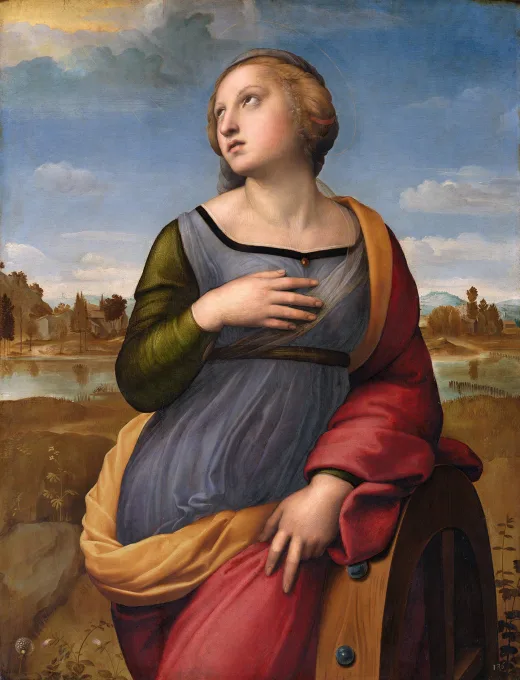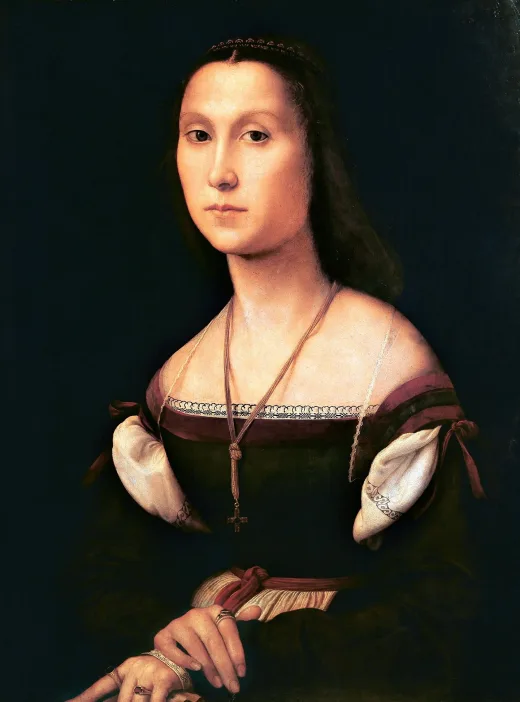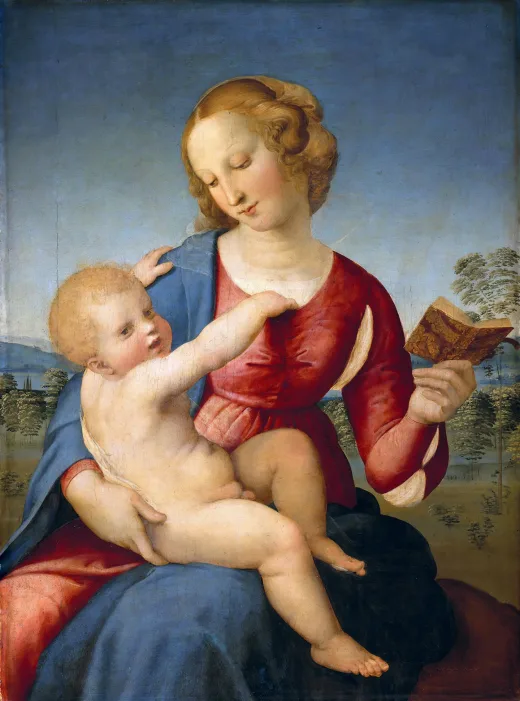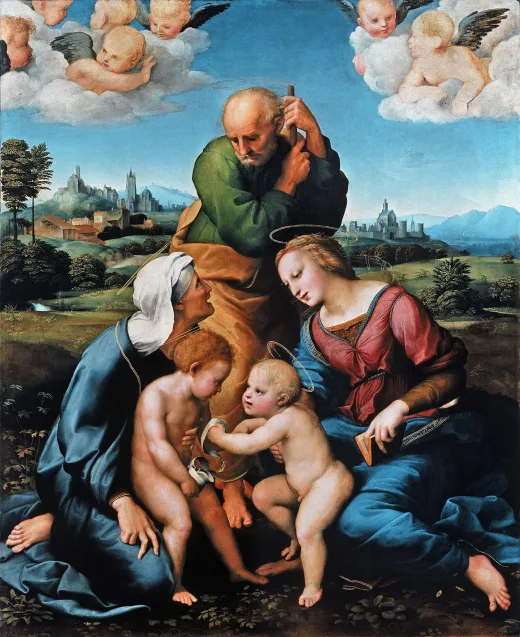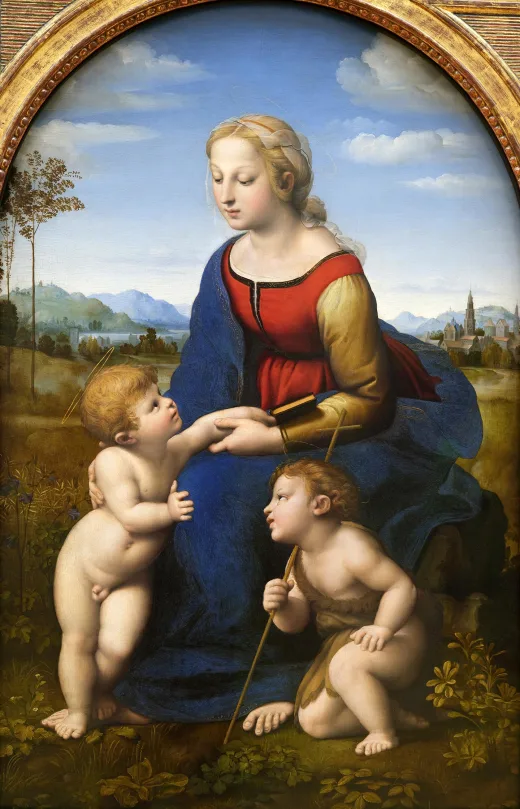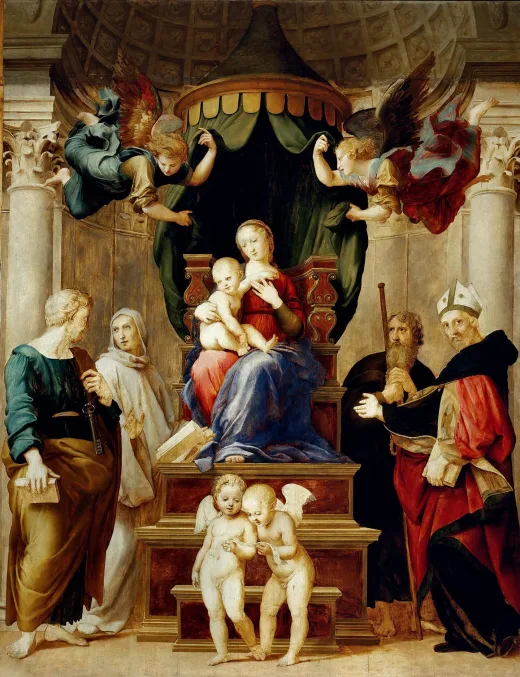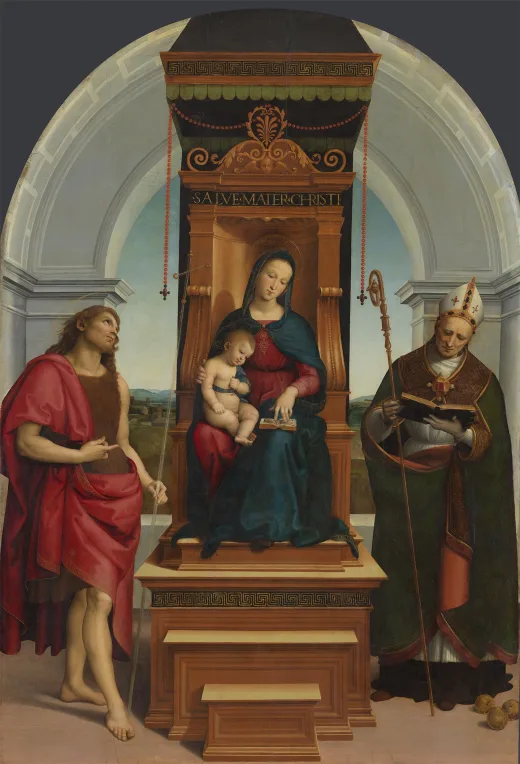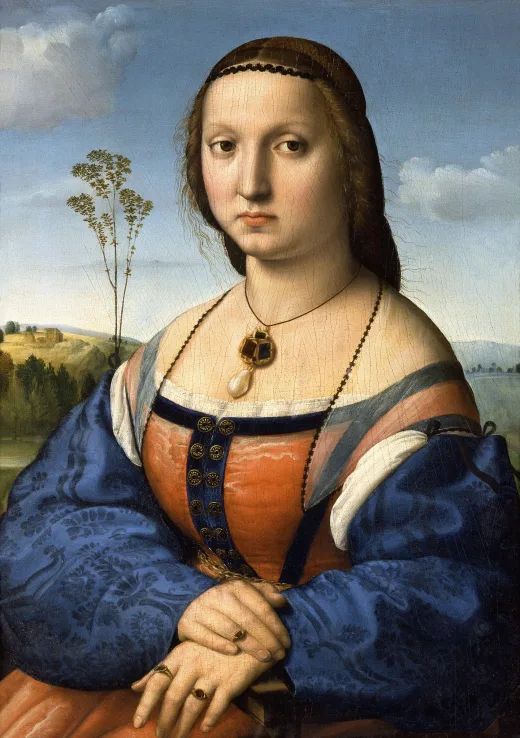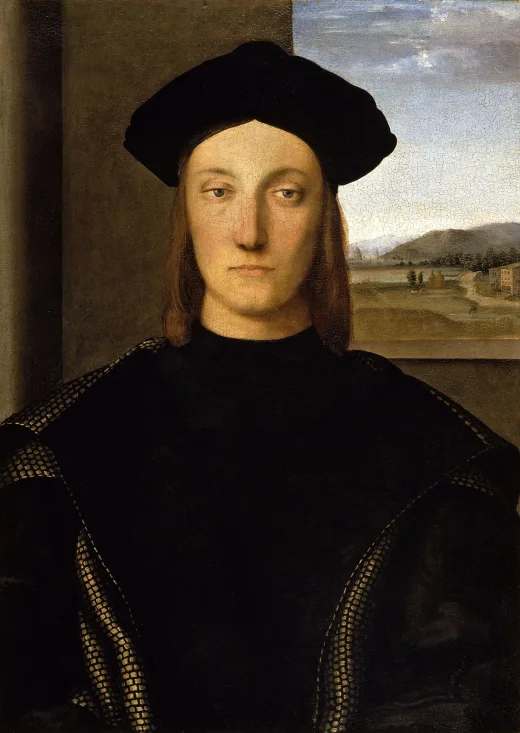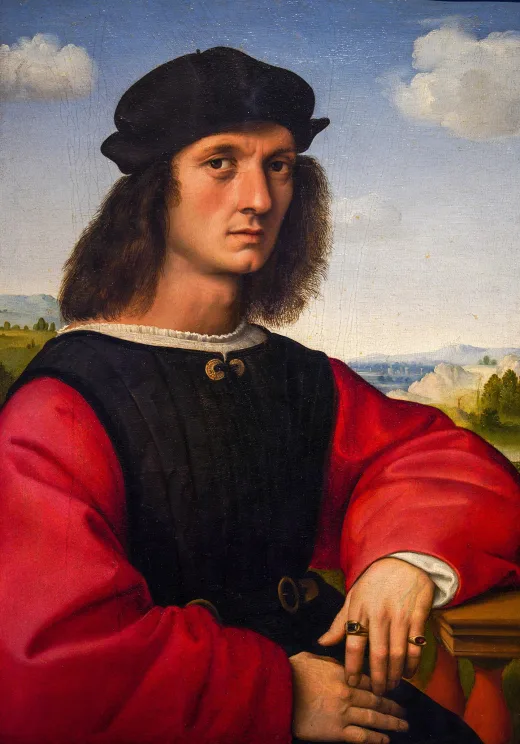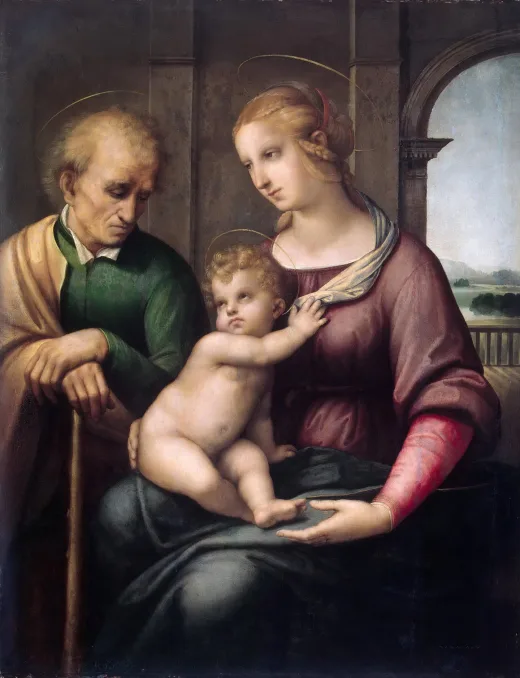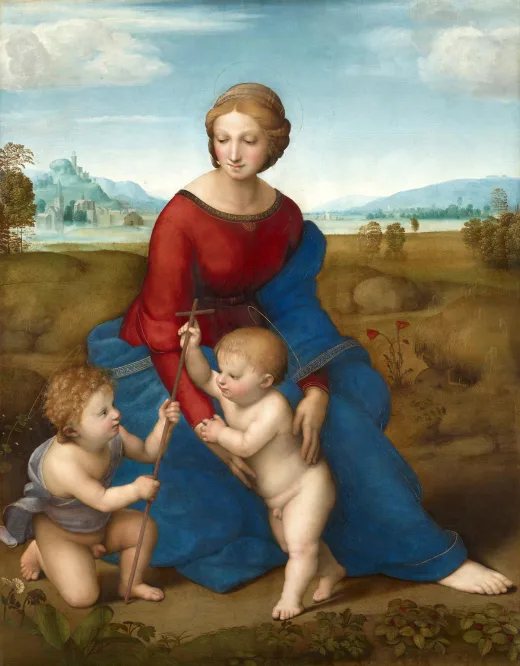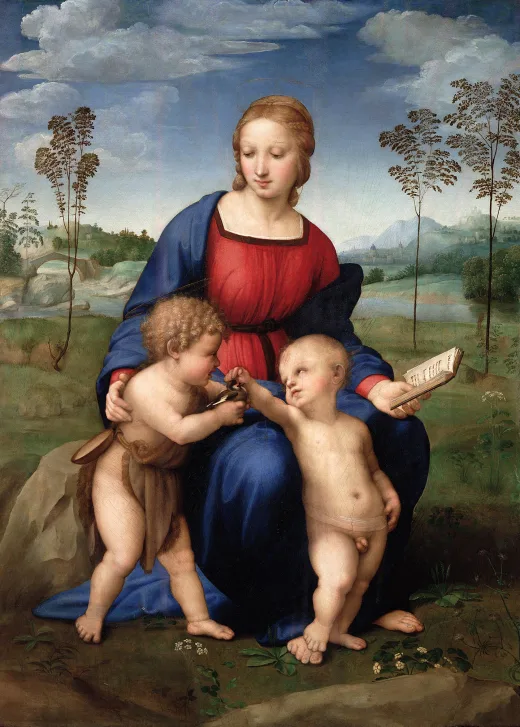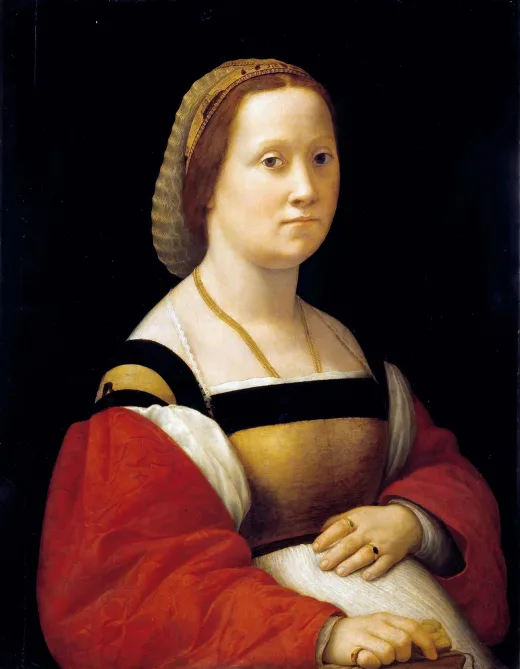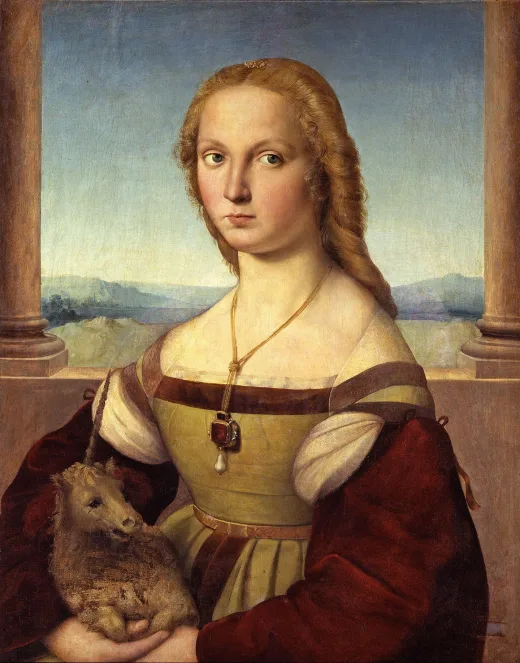拉斐尔作品《大公爵圣母》高清图片
原图尺寸:2650×4066像素(72 DPI)高清图
下载原图消耗2艺点
文件大小:14.22 MB
下载格式: ZIP ( TIFF+JPG )
作品名称:大公爵圣母
Madonna del Granduca
作品作者:拉斐尔(Raphael)
创作时间:约1505年
作品风格:文艺复兴盛期
原作尺寸:84×55厘米
作品材质:木板油画
收藏位置:佛罗伦萨皮蒂宫
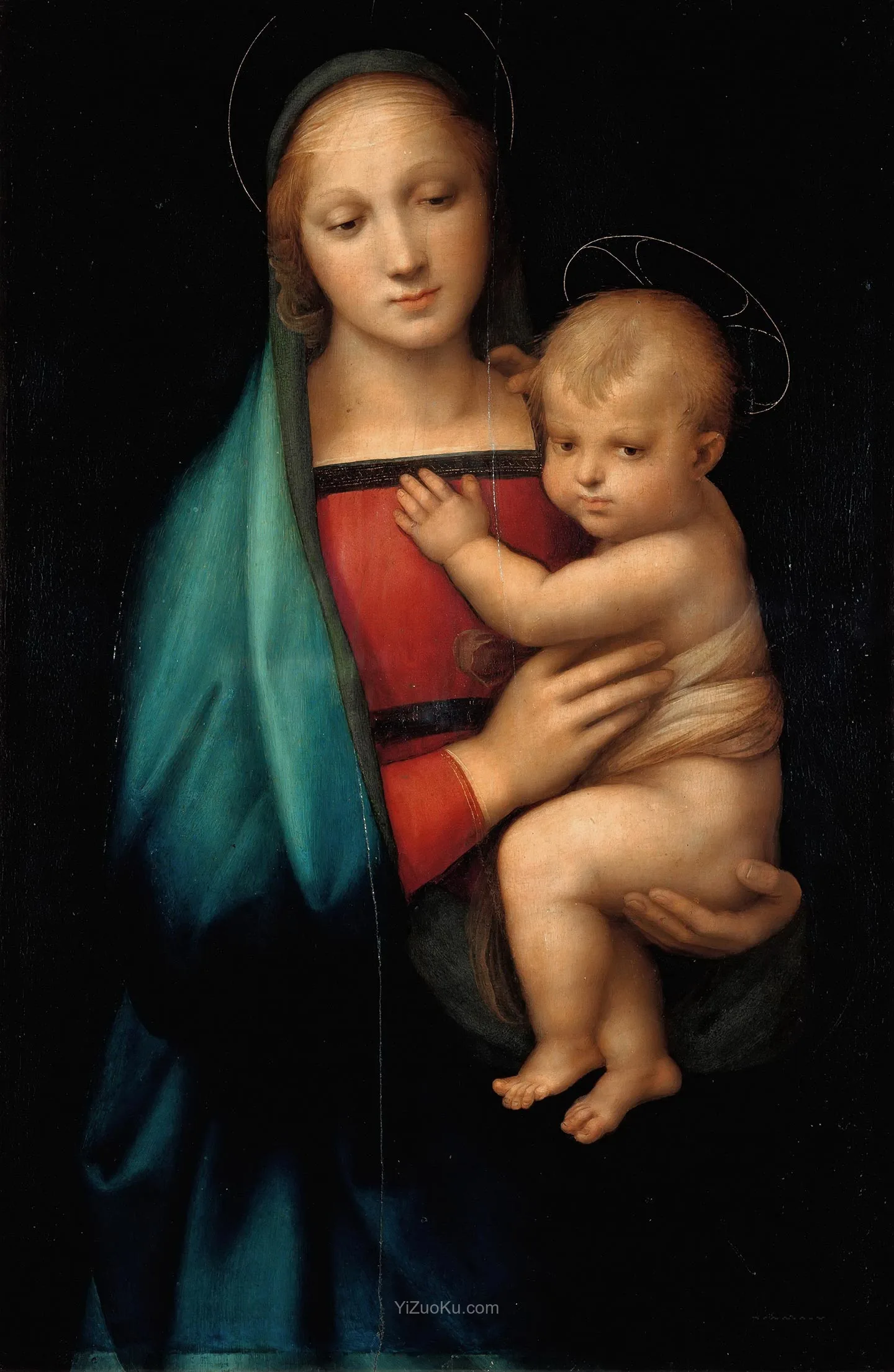
作品简介
《大公爵圣母》是意大利文艺复兴大师拉斐尔最具代表性的圣母像之一,约创作于1505年(一说1506-1507年),现珍藏于佛罗伦萨帕拉蒂纳美术馆。该馆拥有全球数量最多的拉斐尔油画与板画收藏,而本作正是其中最能体现艺术家"人性化神圣"创作理念的杰作。
艺术特征
画面中圣母玛利亚肃立中央,双手托举圣婴面向观者。她低垂的忧郁目光与基督稚嫩而肃穆的面容形成微妙对话,简洁的构图通过精确的手势传递出母子间深厚情感,同时暗喻着对基督未来受难的悲悯意识。拉斐尔运用达芬奇式的晕涂法(sfumato),使人物轮廓笼罩在柔和的明暗过渡中——这种技法明显受到其在佛罗伦萨期间研习达芬奇作品的启发。X射线检测显示,原作背景本为柱廊拱门与田园风光(类似《粉红圣母》或冬宫藏《无髯圣约瑟圣母》的室内场景),后为符合时代审美而被改为深色,强化了人物的纪念碑性。
创作背景
作为拉斐尔佛罗伦萨时期(1504-1508)的典型作品,此作见证了艺术家对佩鲁吉诺风格的突破。彼时米开朗基罗、达芬奇与弗拉·巴尔托洛梅奥正于此地创作,拉斐尔吸收佛罗伦萨前辈大师(如多纳泰罗、吉贝尔蒂、卢卡·德拉·罗比亚)的雕塑传统,将圣母题材提升至更具体积感与情感张力的新高度。画作虽尺幅不大,却浓缩了15世纪以来佛罗伦萨 devotional art(宗教艺术)的精华——那些为教堂、礼拜堂乃至贵族私宅定制的陶土、灰泥、木雕与青铜圣母像,在此转化为油画语言的永恒经典。
流传历史
作品得名于托斯卡纳大公费迪南多三世(1769-1824),他于1799-1800年冬购藏此画并置于皮蒂宫。拿破仑时期大公携画流亡,复辟后长期陈列于宫殿私室,仅在其离城时公开展示。1882年起永久陈列于帕拉蒂纳美术馆"土星厅"。值得注意的是,该作原始委托人至今成谜,其深色背景的改造年代亦无定论,这种神秘性更添其艺术史魅力。

素描研究稿
The Madonna del Granduca is a Madonna painting by the Italian renaissance artist Raphael. It was probably painted in 1505, shortly after Raphael had arrived in Florence. The influence of Leonardo da Vinci, whose works he got to know there, can be seen in the use of sfumato. The painting belonged to Ferdinand III, Grand Duke of Tuscany, from whom it got its name.
The Madonna del Granduca is one of Raphael’s most famous works and one of the images identified with the Palatine Gallery, the museum with the world’s highest number of canvases and panels by the artist. It is one of Raphael’s best-loved works, in which he shows all of his skill in representing holy subjects in an immediate, human manner. On this panel, the Virgin Mary is depicted standing, with the Child in her arms. Her melancholy gaze is directed downwards as she holds her child out towards the onlooker, inviting him or her to contemplate his sweet, serious face. The gestures of the two subjects are measured; in spite of its simplicity, the whole composition conveys the deep affection that binds them, as well as a painful awareness of Christ’s future sacrifice.This picture was painted by Raphael in 1506-7, during his stay in Florence (1504-1508), when Michelangelo, Leonardo and Fra Bartolomeo were producing their own masterpieces in the city. Raphael, who trained under Perugino, matured in this period and on several occasions, he used the Madonna and Child as a subject, together with the young St John or St Joseph, painting in a more monumental, volumetric style, obtained using Leonardo’s subtle, blended chiaroscuro, and stimulating his attention for expressions of affection towards a greater emotional intensity. To complete this small yet precious painting, Raphael was able to draw on a wealth of Florentine iconography: the countless Madonnas and Child in terracotta, stucco, wood, marble and even bronze, which the masters of the 15th century, such as Donatello, Ghiberti and Luca della Robbia had produced in large numbers to meet the needs of devotional images to place in the churches, chapels, street tabernacles and rooms inside the palaces of wealthy customers.The composition did not start out with a dark background: x-ray images taken by the Opificio delle Pietre Dura have revealed that under the black surrounding the figures, there was an interior with a pillar supporting arches and a glimpse of countryside to the right, as can be seen in the Madonna of the Pinks or the Madonna with Beardless St Joseph in the Hermitage (St Petersburg): a setting that accentuated the domestic tone of the painting. It is plausible that after completion, to bring the work into line with changing tastes, the painting’s background was eliminated to leave the central group in the magnificent isolation we see today.
This famous painting, whose origins and customer are unknown, takes its name from Ferdinand III, Grand Duke of Tuscany (1769-1824) who authorised its purchase between autumn 1799 and winter 1800, when it came to Pitti. It never moved from here, except during the period of Napoleonic rule, when Ferdinand took it with him in exile. The Grand Duke’s family was particularly fond of the painting and on the court’s return to Florence, it was displayed in the private rooms of Pitti Palace, and the Grand Duke only allowed it to be shown in public when he was absent from Florence. In 1882 the painting took its place where we see it today, in the Saturn Room.

